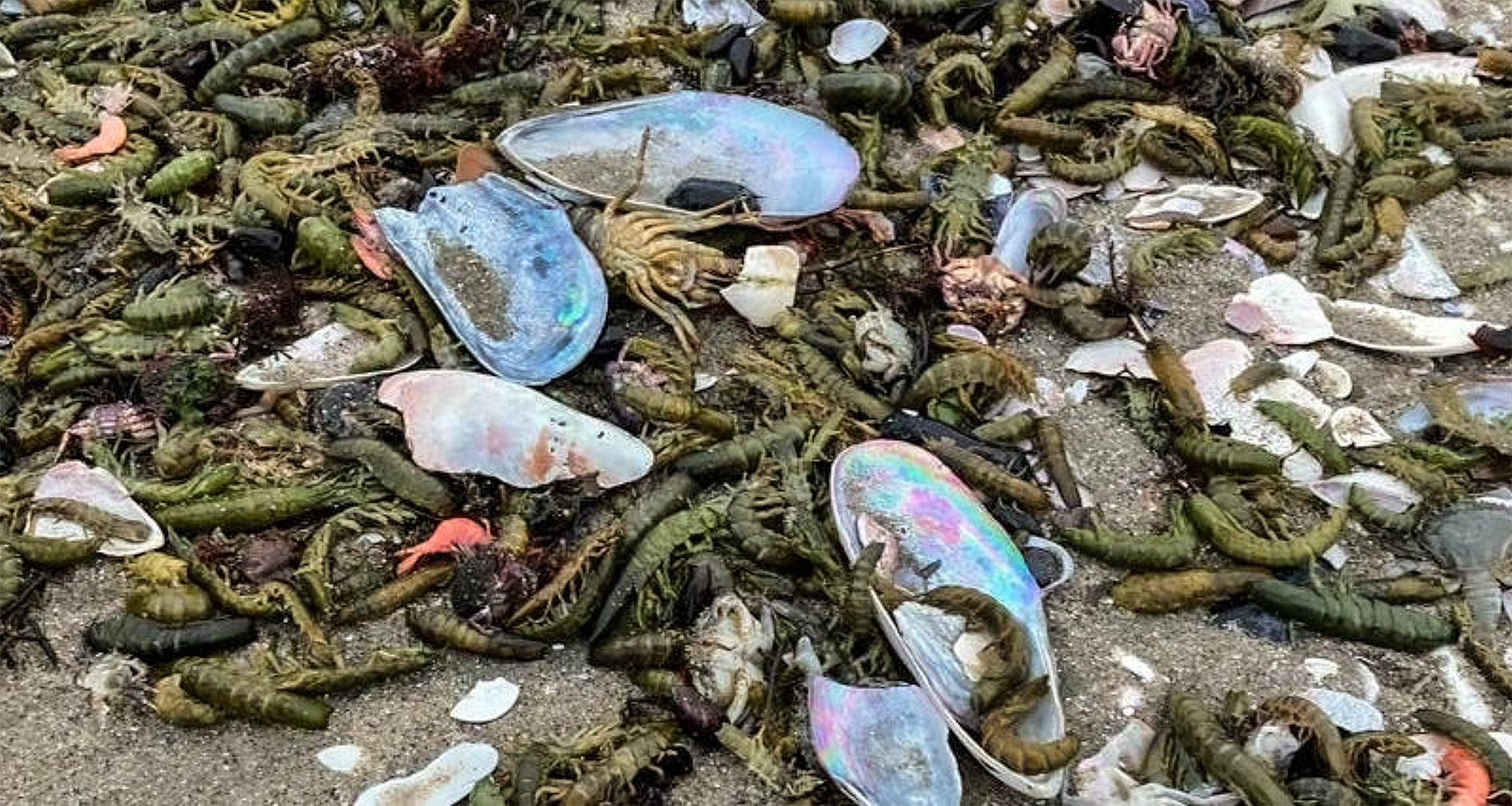It was a bizarre sight. Beaches from Swakopmund to Walvis Bay were strewn with dead and dying octopuses, crustaceans and small fish. Startled locals posted disturbing images on social media … and the speculations began.
One theory has to do with the Swakop River. It’s hardly a river at all, just an ephemeral geological suggestion with a dry mouth which gave the Namibian town of Swakopmund its name. But in early April there were heavy rains inland and it broke through to the coast, bringing a surge of fresh water, sediments and nutrients which were in its bed.
The sudden influx, locals suggest, might have reduced salinity and oxygen levels in the coastal shallows, triggering hypoxic conditions — zones where oxygen levels plummet — often fatal for marine life. Combined with stratification (where lighter freshwater layers inhibit oxygen mixing with deeper saltwater), this can suffocate organisms like octopuses, crabs, lobsters and small sharks.
Social media photos from residents and a video clip from NBC News show a disturbing array of lifeless creatures littering the beaches between Afrodite Beach and Bird Island. Others in the coastal community have flagged a different phenomenon: a sulphur eruption.
 Thousands of dead octopuses and other creatures lined Swakopmund beaches. (Photo: Facebook (X))
Thousands of dead octopuses and other creatures lined Swakopmund beaches. (Photo: Facebook (X))
Mass mortalities
Jorg Walter, a longtime resident familiar with marine conditions in the area, told NBC News he’d witnessed similar mass mortalities several times in his life, “But never on this scale”. A similar event occurred about two months ago south of the Jakkalsputz camping site near Henties Bay.
In the past he’d observed marine life washed up as far as Wlotzkasbaken and suspects the cause may lie in sulphuric gases that bind with dissolved oxygen in the water, leaving little for marine animals to breathe.
Read more: From Octopus Teacher to Amphibious Soul – filmmaker Craig Foster on why living in SA is a privilege
While sulphur eruptions are not new to Namibian waters, the scale and timing of this event have drawn comparisons to another, more systemic occurrence: the Benguela Niño.
In a scientific paper, this is described by oceanographers Vere Shannon and Michael O’Toole, who found that the Benguela Niño to be a climatic event that occurs when warm, nutrient-poor water from the equatorial Atlantic intrudes into the normally cold, nutrient-rich Benguela Current system.
This, they say occurs roughly once a decade, and disrupts upwelling processes critical to sustaining life in the region’s waters. Diminished oxygen levels can lead to wide-scale marine die-offs.
These events are not necessarily synchronized with the better-known Pacific El Niño, but both share common triggers: weakened trade winds, warmer surface temperatures and disrupted nutrient cycles.
 Huge marine die-off sparks debates about causes. (Photo: Facebook)
Huge marine die-off sparks debates about causes. (Photo: Facebook)
Benguela system
In the Benguela system, this warm water tends to suppress the usual upwelling near Lüderitz, a hotspot of marine productivity. The intrusion can reduce biological productivity, increase stratification and contribute to hypoxic and anoxic conditions in bottom waters.
Read more: Pristine national park under threat as hydrogen plant planned for Namib Desert’s Sperrgebiet
According to Shannon and O’Toole’s study, such events were recorded in 1934, 1949, 1963, 1984, 1995 — and may now be recurring. The Benguela system, described as one of the world’s most productive marine ecosystems, is particularly sensitive to such disruptions due to its unique position between warm water systems to the north (Angola Current) and south (Agulhas Current).
 Dead creatures along Namibian beaches. (Photo: Facebook)
Dead creatures along Namibian beaches. (Photo: Facebook)
The intrusion of warm tropical water into this cold-water upwelling region triggers cascading ecological consequences, including plankton collapse, fish stock fluctuations, and mass mortalities.
A vagrant river, a sulphur upwelling or a sudden influx of warm water? Whatever it is, this is bad news for the fragile coastal life along Namibia’s coastline. DM




 Dead creatures along Namibian beaches. (Photo: Facebook (X) )
Dead creatures along Namibian beaches. (Photo: Facebook (X) ) 